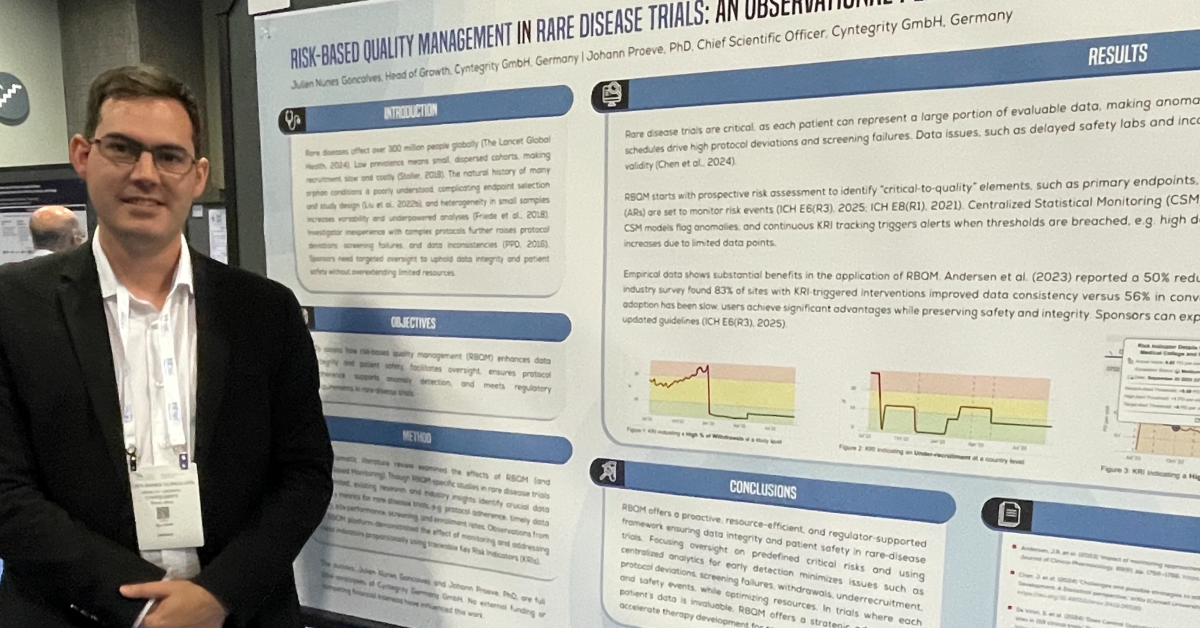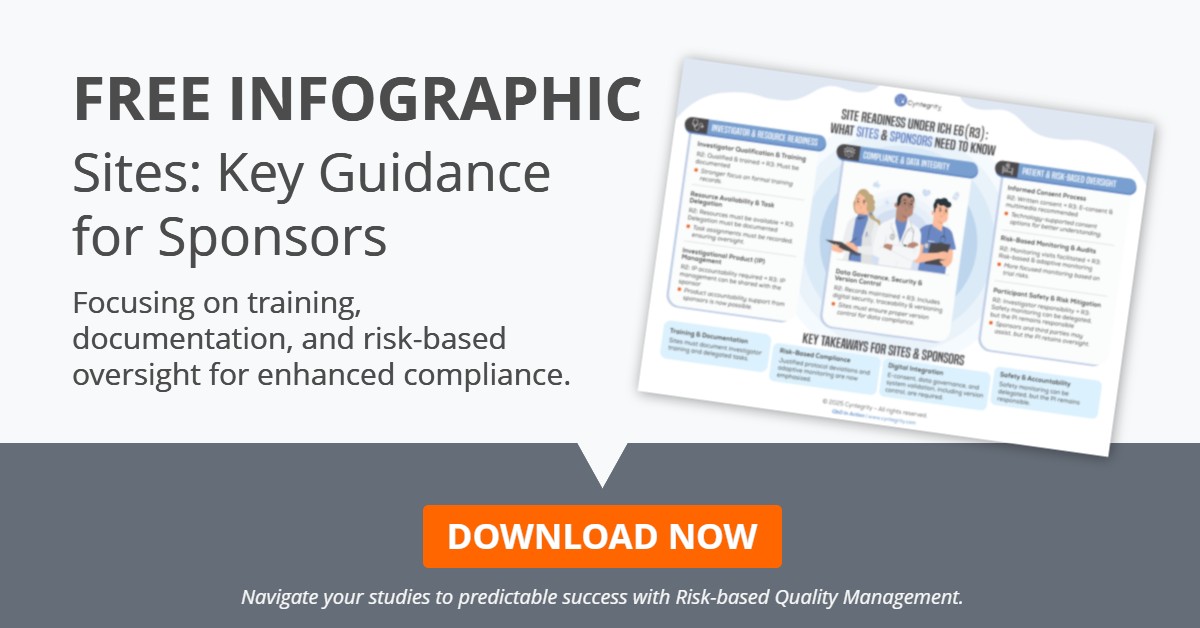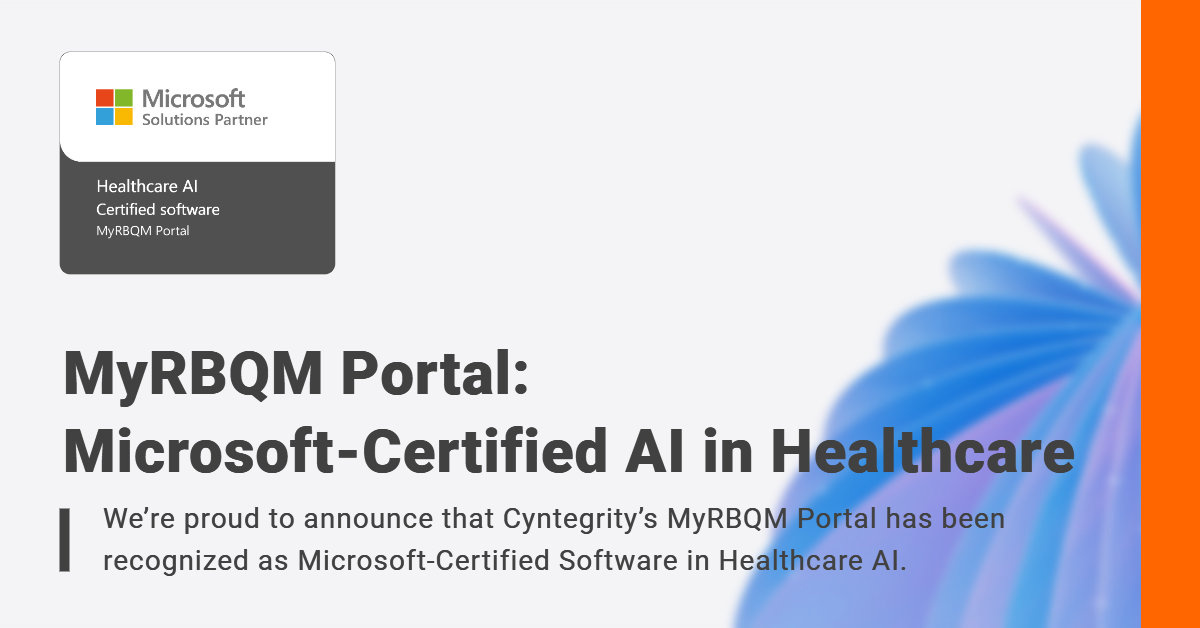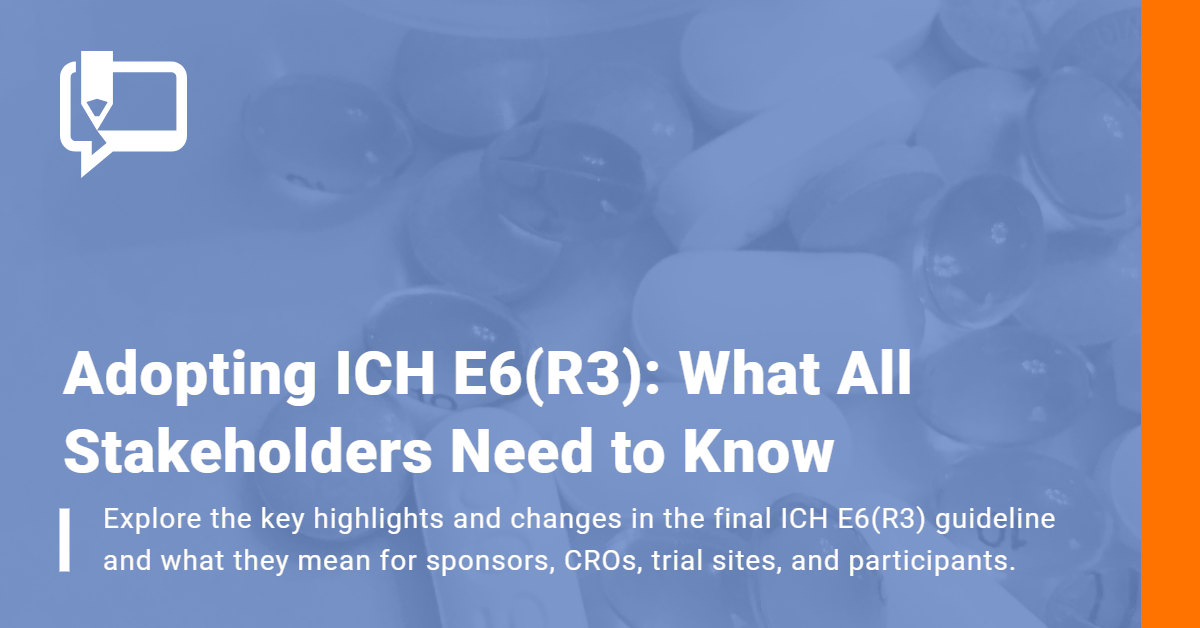US Implementation Date Still Pending
 On September 9, 2025, the U.S. Food and Drug Administration (FDA) published the finalized ICH E6(R3) Good Clinical Practice (GCP) guidance in the Federal Register. While this marks a major milestone for clinical trial modernization, the FDA has not yet set an implementation date.
On September 9, 2025, the U.S. Food and Drug Administration (FDA) published the finalized ICH E6(R3) Good Clinical Practice (GCP) guidance in the Federal Register. While this marks a major milestone for clinical trial modernization, the FDA has not yet set an implementation date.
By contrast, the European Medicines Agency (EMA) has already confirmed an effective date of July 23, 2025, for Europe. This means that sponsors, CROs, and sites operating internationally face a staggered regulatory landscape.
Key Global Dates at a Glance
| Region | Status | Effective Date | Source |
|---|---|---|---|
| ICH | Final guideline endorsed | Jan 2025 | ICH.org |
| EMA (EU/EEA + CH) | Effective date confirmed | July 23, 2025 | EMA |
| FDA (US) | Final guidance published | Sept 9, 2025 | Federal Register |
| US Implementation | To be announced | TBD | FDA |
A Modernized Approach to Good Clinical Practice
The finalized guidance reflects the most significant update to GCP in decades. It introduces:
- Risk-based quality management as the backbone of compliance.
- Proportionality — tailoring oversight and documentation to actual trial risks.
- Modern tools and practices such as remote monitoring and eConsent.
- Clarity on responsibilities when delegating tasks to service providers.
- Data governance principles that emphasize transparency and integrity.
As ICH itself stated when releasing the final text in January 2025:
“The E6(R3) Guideline sets out principles that are applicable to clinical trials of medicines, providing a flexible and modernized approach that can adapt to innovations in trial design and conduct.”
— ICH.org
What This Means for U.S. Sponsors and CROs
Even without a fixed implementation date, U.S. stakeholders should not wait. Those already preparing for the EMA’s July 2025 deadline will be better positioned when the FDA sets its own clock. Now is the time to conduct a gap analysis of existing SOPs against the new E6(R3) requirements, invest in Risk-Based Quality Management (RBQM) tools and training, and prepare sites for remote processes such as monitoring and eConsent. Equally important is establishing strong data governance models that align with Annex 1 expectations. At Cyntegrity, we’ve been examining the regulatory and operational implications of E6(R3) since the draft stage, and our Good Clinical Practice insights highlight what sponsors, CROs, investigators, and sites should prioritize to stay ahead.
Why Early Action Matters
Clinical development is global, and differences in regulatory timelines can quickly complicate operations. By adopting E6(R3) practices now, organizations can ensure seamless trial oversight across both U.S. and EU regions, reduce the risk of compliance gaps during inspections, and foster a culture of patient-centric, risk-proportionate quality that meets the expectations of regulators worldwide.
Looking Ahead
The FDA’s publication of ICH E6(R3) is a landmark. But with the U.S. implementation date still pending, the message is clear: prepare early, align globally, and embed RBQM practices now.






